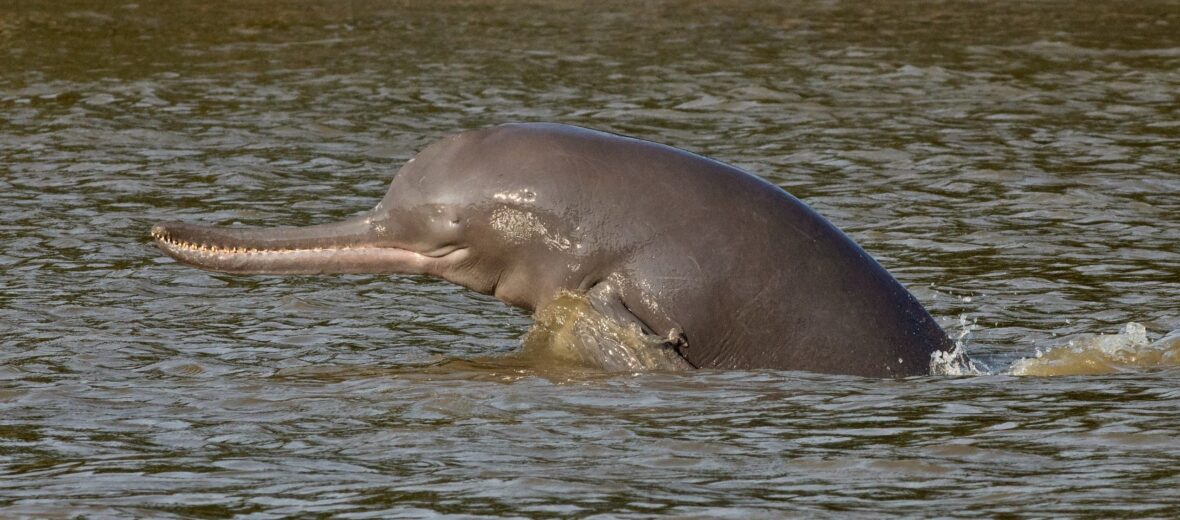
The Ganges River dolphin, aka Susu or south Asian river dolphin, hails from the Ganges river basin in the Indian subcontinent. They used to inhabit the Ganges-Brahmaputra-Meghna and Karnaphuli-Sangu river systems of Bangladesh, India, and Nepal. But are now extinct from most of their original habitats. Dolphins, along with some species of turtles, sharks, and crocodiles, are among the oldest living creatures in the world but are under the greatest threat of extinction. Due to habitat destruction and pollution these dolphins are listed as Endangered by the IUCN and their numbers are steadily decreasing.
First the Stats…
Scientific name: Platanista gangetica
Weight: Up to 374 lbs.
Length: Up to 8.9 feet
Lifespan: Up to 26 years
Now on to the Facts!
1.) These dolphins go by many other names, like: Gangetic dolphin, Ganges susu, Indus blind dolphin, Indus dolphin, Shushuk, Bhulan, blind river dolphin, and the side-swimming dolphin.
2.) The Ganges River dolphin is typically solitary, but can congregate into groups of up to 30 when there is more food present.
3.) Their teeth are merely used to grab onto prey, but not to chew, as they swallow their prey whole.
4.) They communicate via various sounds like: bursts, clicks, and twitters.
5.) Being nearly blind, they rely on echolocation to find their way around and to locate prey.
But wait, there’s more on the Ganges River dolphin!
6.) These dolphins prey on fish and crustaceans.
7.) Their only predators are humans.
Did you know…?
Like other river dolphins, they possess an extra vertebra in their neck that allows them to turn their head.
8.) A group of dolphins is called a herd, pod, or school.
9.) Females birth a single calf after a 9 – 10 month gestation (pregnancy).
10.) The females birth a calf approximately every 2 – 3 years.
But wait, there’s still more on the Ganges River dolphin!
11.) Due to evolving a flat cornea, they are not able to form readable visual images so they are essentially functionally blind. Their eyes are therefor only used to detect light and dark.
Did you know…?
It is estimated that there are only a mere 1,200 – 1,800 individuals left in the wild, to date.
12.) When searching for food, these dolphins have also been seen swimming upside down.
13.) Ganges River dolphins predominantly swim on their sides, using their flipper, along with echolocation, to find food in the murky water and muddy substrate.
14.) These dolphins are protected under the Indian Wildlife Act as well as listed under the Convention of International Trade in Endangered Species, which seeks to prohibit international trade.
15.) In 2009, the Indian government declared the Ganges River dolphin their National Aquatic Animal.
Now a Short Ganges River Dolphin Video!
Be sure to share & comment below! Also, check out the Critter Science YouTube channel. Videos added frequently!
Want to suggest a critter for me to write about? Let me know here.



